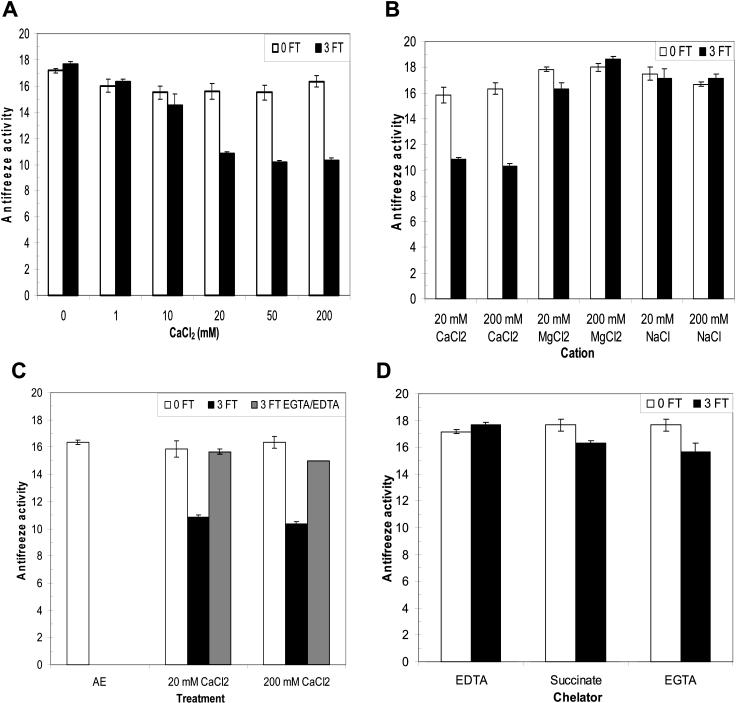Figure 1.
Effect of cations and freeze-thaw (FT) cycles on antifreeze activity. A, Apoplastic proteins in solutions containing 1 to 200 mm CaCl2 at pH 5.5 (0FT), were assayed for antifreeze activity, and then frozen and thawed three times (3FT) and reassayed. The absence of Ca2+ was achieved by dialyzing proteins in 5 mm EDTA. B, Apoplastic proteins were dialyzed in 20 or 200 mm CaCl2, MgCl2, or NaCl at pH 5.5, then frozen and thawed three times. C, To determine if the effect of Ca2+ was reversible, apoplastic proteins were frozen and thawed in the presence of 20 or 200 mm CaCl2, then dialyzed in either 5 mm EGTA or 50 mm EDTA at pH 5.5. AE is the activity of the original apoplastic extract in 20 mm CaCl2 and 20 mm ascorbate, pH 3. D, Apoplastic proteins were dialyzed in 5 mm EDTA, sodium succinate, or EGTA at pH 5.5, then frozen and thawed three times. Antifreeze activity was quantified by determining changes in ice morphology with dilution as described in “Materials and Methods”. Data are presented as means ± se, n = 3.

